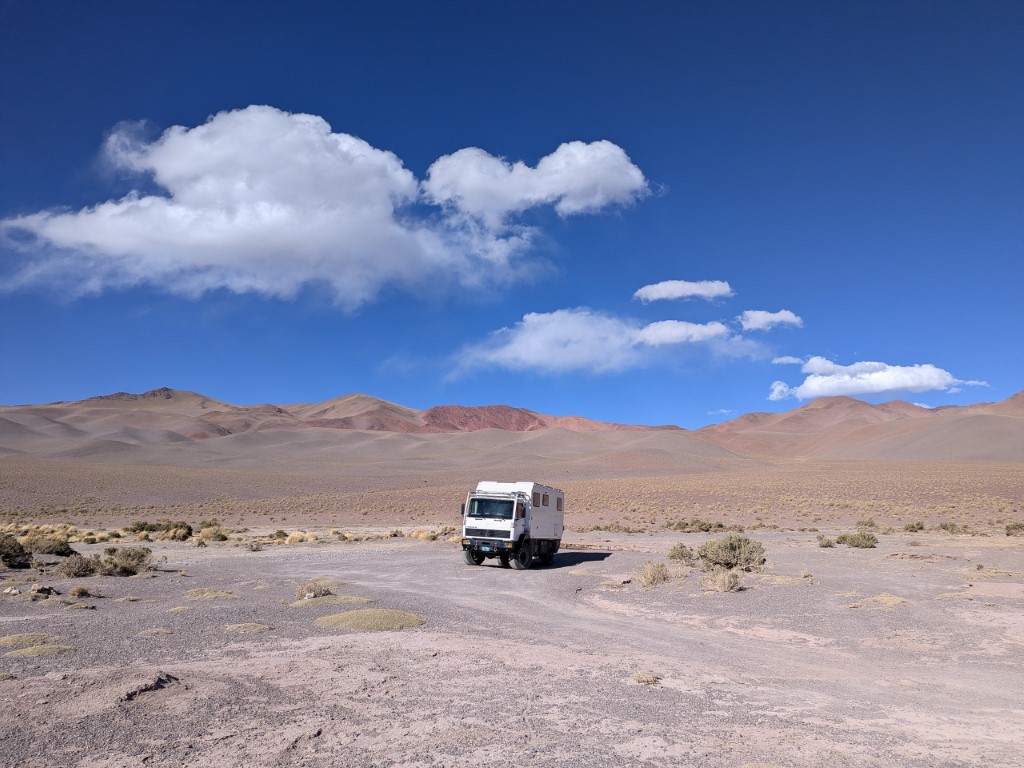
Greetings from Salta in northwest Argentina. Right now, we are camped beside the largest swimming pool I’ve ever seen in my life but sadly, it is still empty for winter. 🙁 I couldn’t even get the whole thing in the pic even with a wide angle.

We didn’t waste any time getting restocked and out of Mendoza headed north. Hiking in big open spaces is our shtick and we were really missing it. We drove far enough to get to a reservoir lake with a decent hiking area above it so we could move our legs.


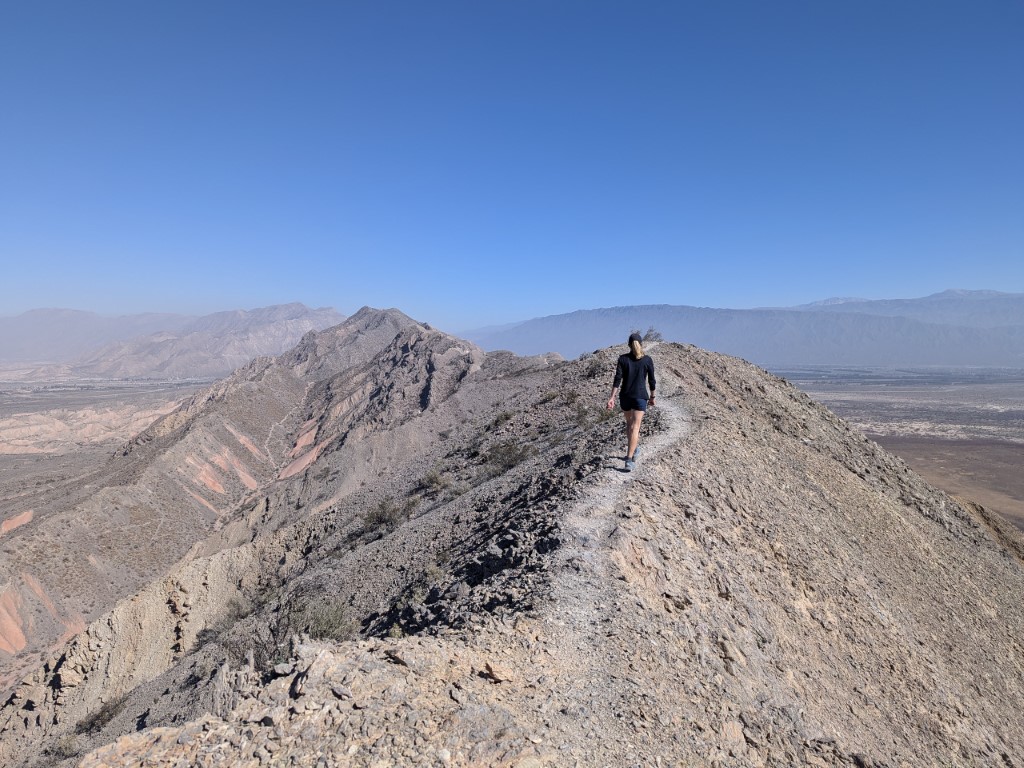
After a morning run, we continued driving through pretty average scenery to get to the little town of Chilecito and park beside Ivan once again. Because he’d already explored the area, he’d be our tour guide over the coming days.




Chilecito has something unique in it- lots of gold, silver and copper deposits…. and from that, the Mejicana mine. At a museum in town and from several excellent viewpoints and hikes, we learned some history. The gold mine was discovered by a man of Mexican descent, hence the name of the mine. The Argentine government funded most of this mine, a German company designed and built the elaborate design and the British ran it. Right around the time of WWI, the mine was already failing, and it only operated for a few more years after the war was over. But the most interesting part of it all is that everything is almost frozen in time, the design and extreme conditions where it operated are one of a kind and you can visit a lot of it on your own. Briefly, there were 9 stations on a 34km long cable car system that carried the ore from the actual mine at over 15,000 feet, down to the town of Chilecito where it was offloaded onto a train and carried all the way across the country to Buenos Aires. There were 262 towers alone that held the cable and 6 boiler stations that provided the power to run the cable cars. Crew and supplies were carried up & down the cable car system in special cars for that and the rest of the cars were for the ore. It is so detailed and beautifully built and the old pictures at the museum bring the mine to life. I so wished we could have hiked to the highest station but you would need to backpack it for that.


We visited 4 of the stations, one on a day hike. Station 1 at the bottom looked something like a roller coaster. All I could think of was what an amazing amusement ride this whole thing could be. It was great to explore all of the old equipment, the massive leather belts from the engines, the elaborate car systems and the long cables that went off into the distance uphill. It would take employees 2 hours each way to get to work on the cable cars- can you imagine?





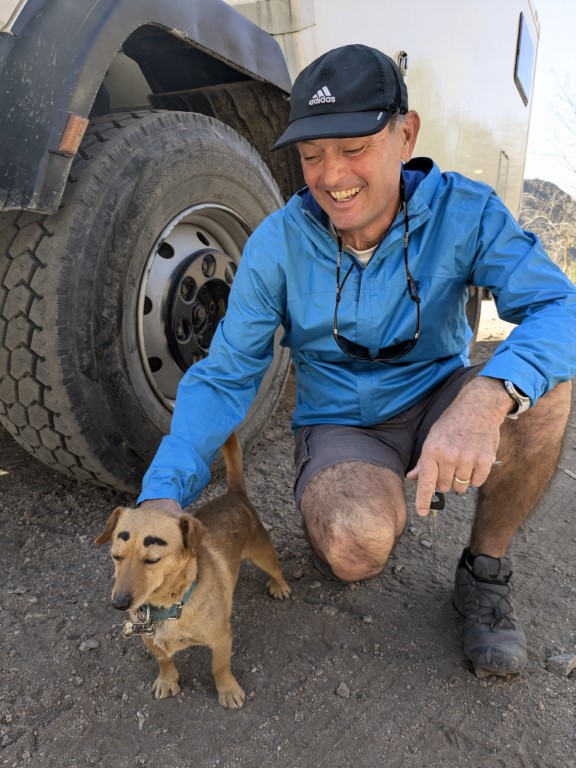


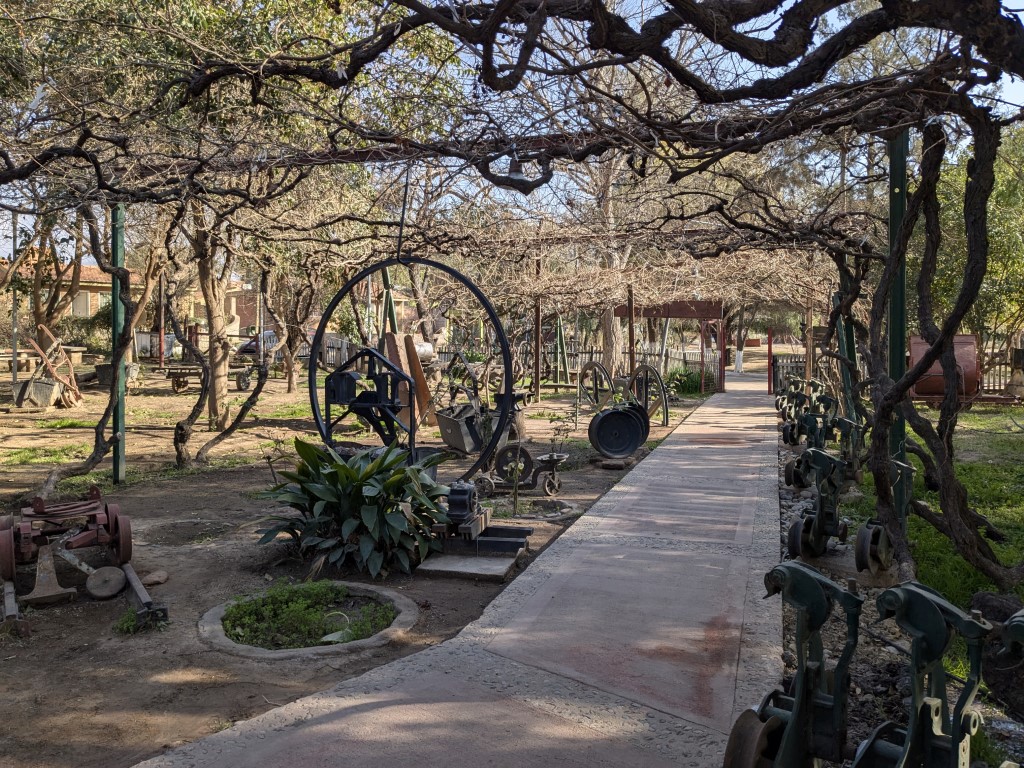
With all of the minerals, there are of course colorful rivers- one is the Yellow and the other a pretty blue. We biked up a canyon to see them and camped beside them too at the juncture. On the way out of town, we got a tasty Lebanese lunch but the town of Chilecito got it’s name from all of the Chilean workers that were recruited to build the mine as they had experience from Chile’s mining history and this mine was built in about 18 months. When there’s profit involved, things get done swiftly!



We drove north to the town of Fiambala, which means windy in the local indigenous language. We parked at Indio canyon, a beautiful canyon where you could do a great 6 mile run or walk in a unique area. We liked it so much we did it 3 times! Fiambala has its own hot springs, and we spent an afternoon jumping from pool to pool getting too hot or too cool until our fingers & toes were wrinkled.







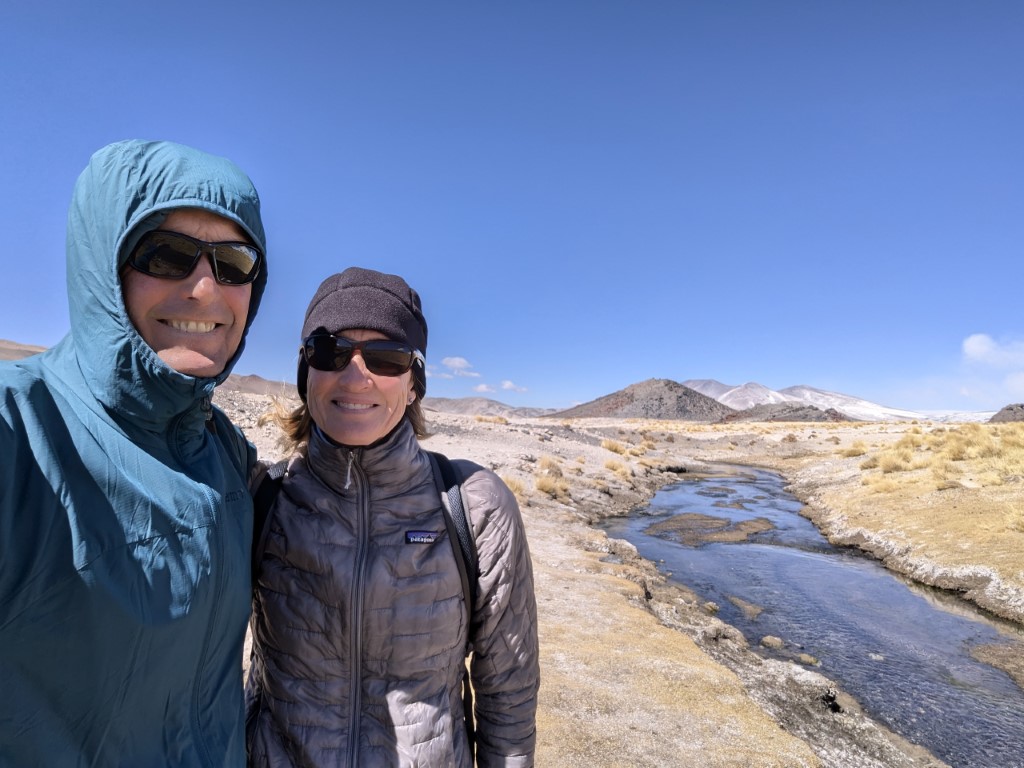




We took a day to drive up to the San Francisco pass through beautiful high altitude scenery and 6000 meter mountains. You can’t cross in to Chile right now because the pass is still closed for winter but we weren’t ready to go into Chile yet anyway so we turned around and headed back down after handing the border officers our licenses to walk to a hot spring on the Chile side. It was too cold to want to get in but the walk was very peaceful and it was neat to be up there by ourselves. There were foxes and vicunas (like a guanaco) and tame little birds that kept us company. On the way down we took a dirt road up toward Seismiles Balcony where there are blue lakes and more great views but there was still too much snow to reach it and it was too late in the day to be up there alone anyway. We drove to 14,400 feet which is the highest we’ve driven to although there is much more altitude in our future in Peru & Bolivia. Anyway, it was a great day of scenery spectating.
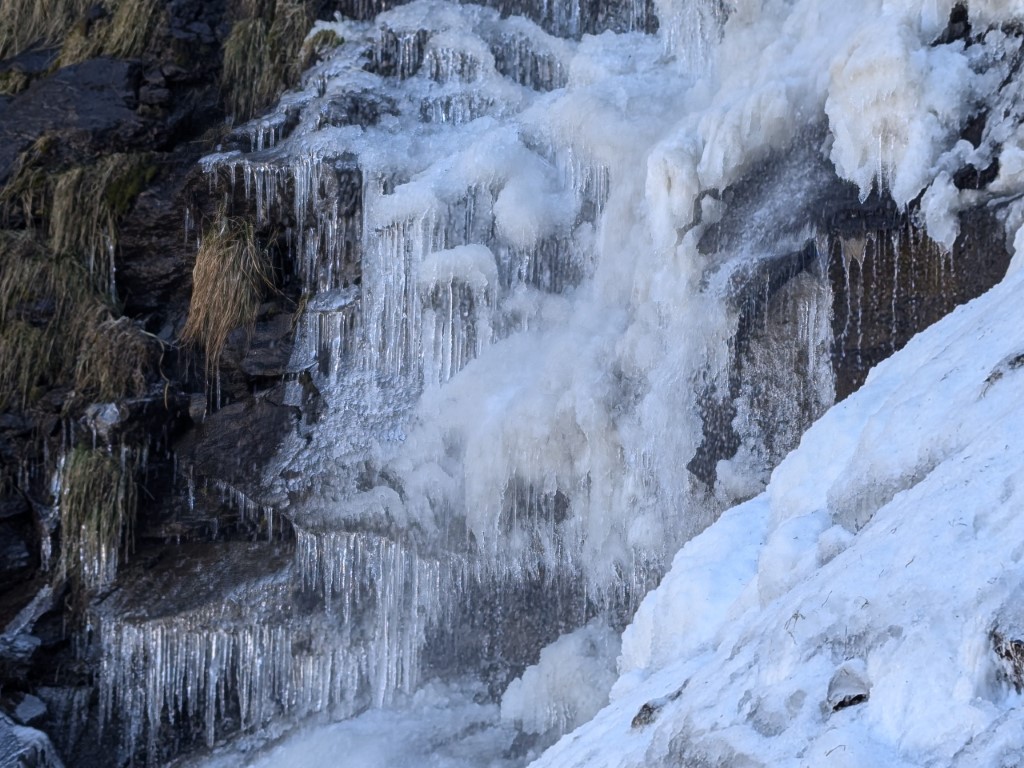



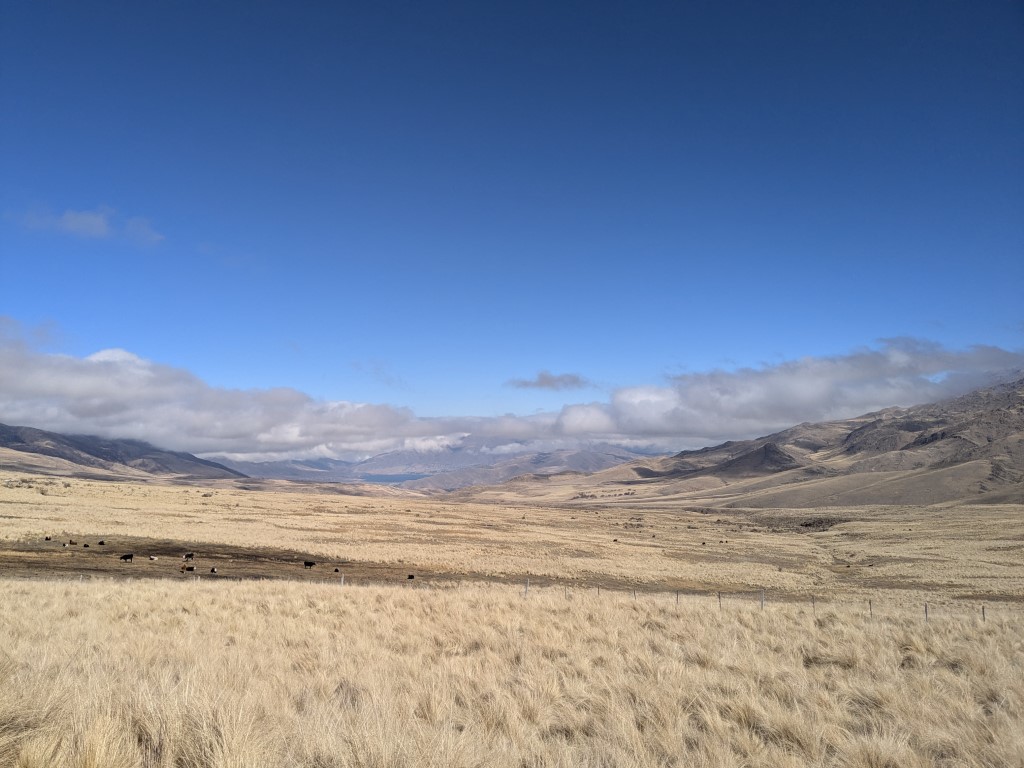





Lured by pictures of green valleys, we drove to Tafi De Valle, a mountainous valley with a reservoir lake and opportunities for hiking. Well, at around 9000 ft, it was just barely thinking about Spring so they were fields of gold but we hiked to a beautiful frozen waterfall and up higher into the hills where the gauchos roam. It is a totally different way of life herding animals and a picturesque one too. Whenever gauchos encounter us way out in the middle of nowhere they often seem surprised. Cheese making is very popular in Tafi and there are numerous shops in town where you can taste & buy it. So, we are well stocked with cheese now!







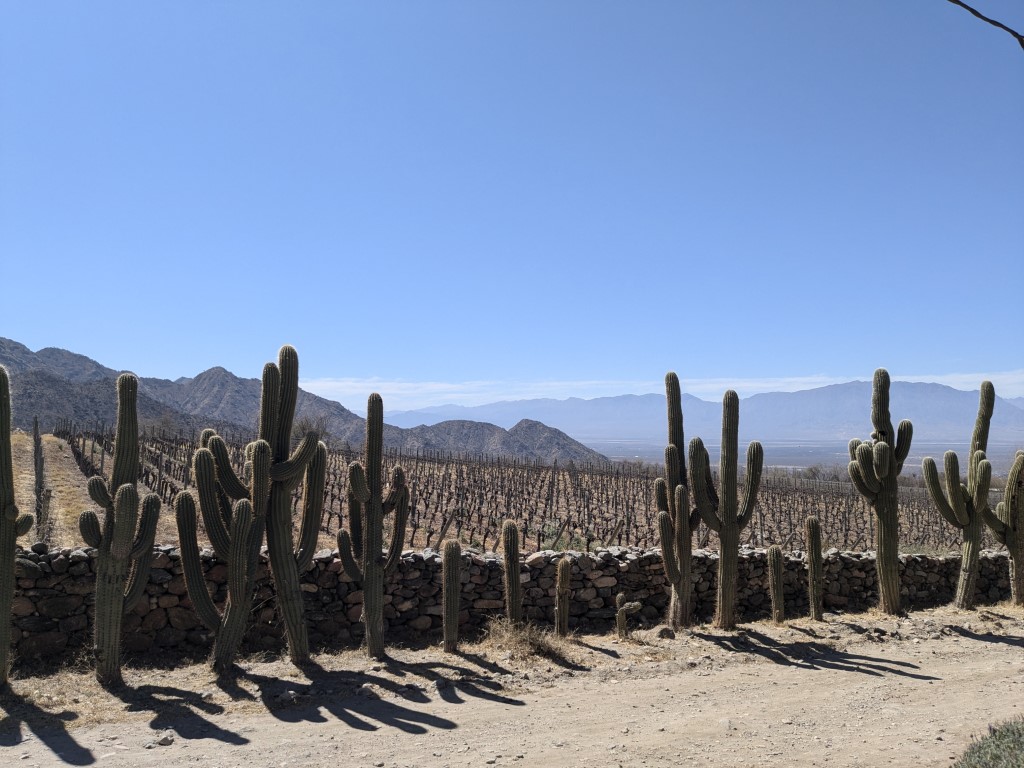


We’d heard nice things about Cafayate, northern Argentina’s wine region so were excited to get there. We stayed in a campground the first couple of nights and then the town square for a couple more. We walked to a goat cheese farm where all the mom’s were having their kids and got to see first hand how that works! At the end of the tour, they give you a great cheese plate and a glass of wine to enjoy on the patio with the friendly cats and a rooster.
My most favorite way to visit a winery is to bike there so we spent a day biking to 2 of them and eating a picnic lunch at one with a glass of wine looking out over the view. The latest thing is wine dispensers. You hold your glass under and choose how much you want, pay on a credit card and enjoy. We hadn’t seen this before and we prefer the old fashioned way.


Being in Cafayate meant we could go out on the town for dinner easily because we were parked right there. So we ate on the square a couple of nights which was fun and with the exchange rate in our favor, it is very affordable.


Just outside Cafayate is the Quebrada de Cafayate and the Medano Dunes. The Rio de las Conchas has carved out an incredible canyon with impressive sandstone formations and side canyons with trails into a burst of color. The dunes were small but added to the landscape because you wonder why they are there. We spent 2 days exploring this area hiking way up into slot canyons and caves and onto ridges. In all that time, there was only one spot, a natural amphitheater, that was busy. It felt funny to see a lot of people. The rest of the time it was just us and the rocks.







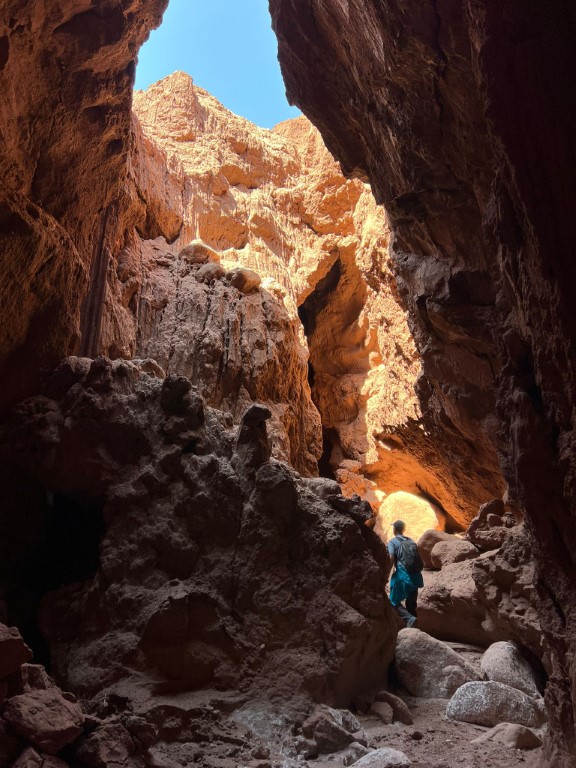














Pushing further north, we took Ruta 40 which is known for its terrible washboard and dust. If we thought it was bad in Patagonia, it is worse here. As it usually works, we drove for quite a few km before deciding we did indeed have to air down our tires. Our rear tires require that Jon lay under the truck and this day we had a breeze so the tarp wrapped around him pretty good!



I don’t actually know how people can live in all this dust. I used to clean up salt and now I clean up dust. But Ruta 40 took us through several adobe villages that are like going back in time and through agriculatural lands where the plowing and planting are done the old fashioned way. Looking out across the fields with a river running through them was really beautiful, especially late in the afternoon when the light was just right to make them glow. We stopped at a winery to taste their products and came away with a decent Torrontes, popular for the area and a sweet after dinner wine that they make. But the best part was sitting in our chairs eating lunch at the winery looking out over the vines eating the cake and coffee that Ivan made for us.


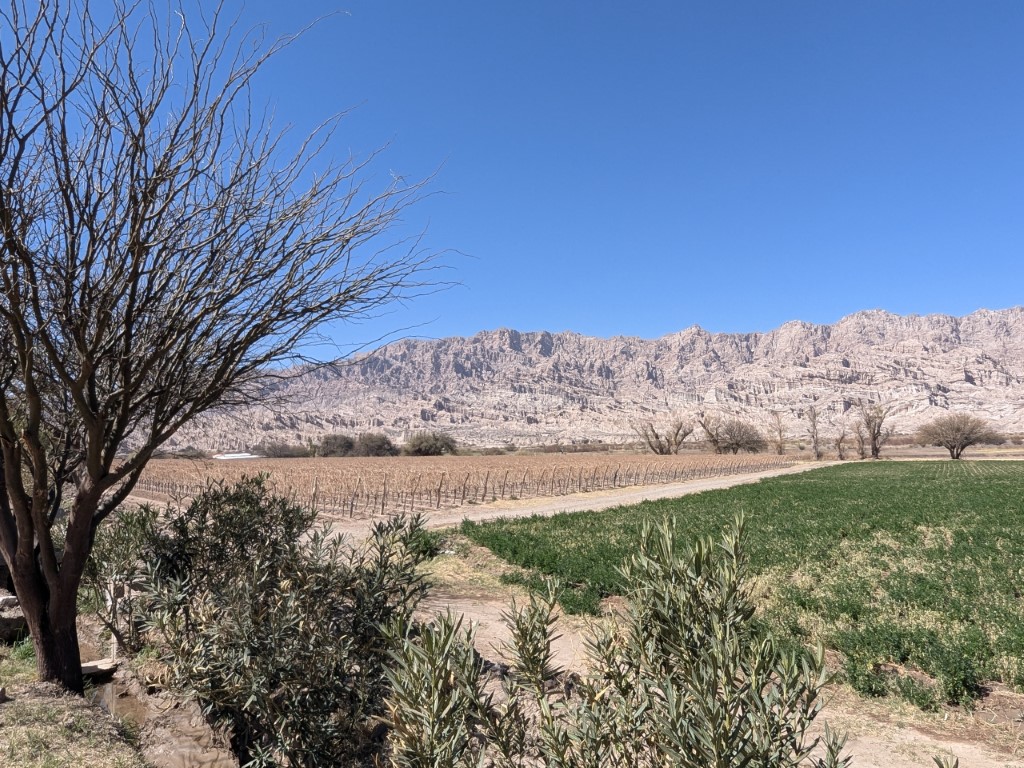
Along the way, we passed through another unique area called Quebrada de las Flechas with more unearthly rock formations that reminded me of rough seas. We camped by a beautiful river that night in silence under a brightly lit star filled sky.
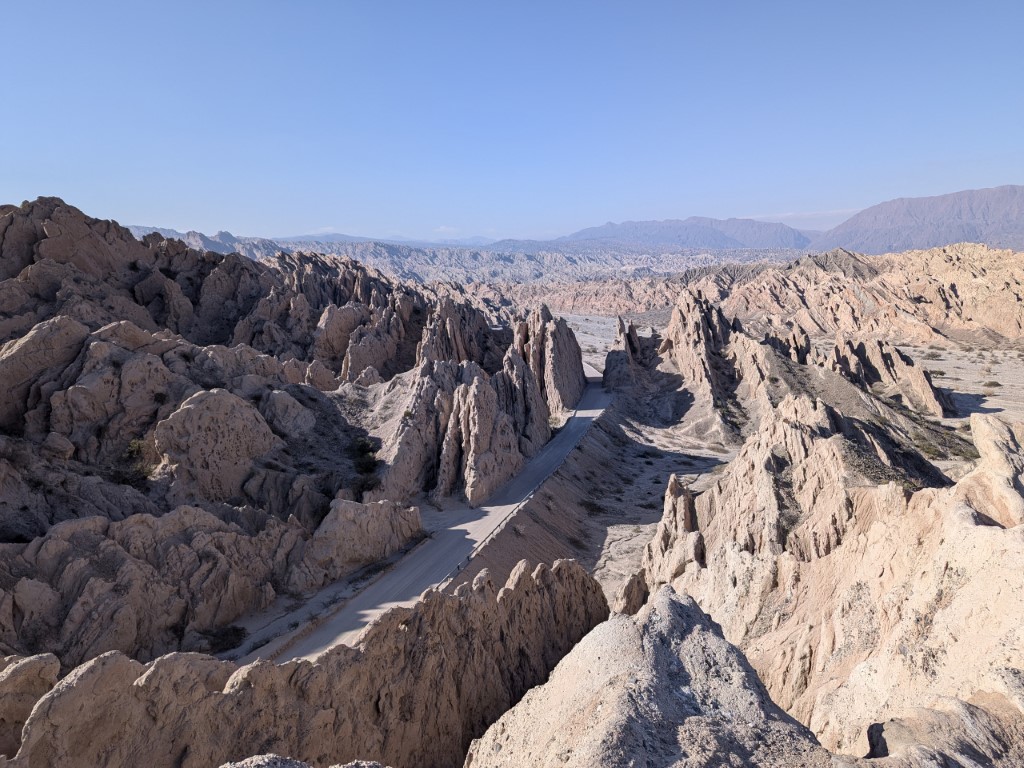


My Lonely Planet guide said that the little adobe pueblo of Cachi would make our hearts quiver with it’s snowy Andean peaks, cobblestone streets and high altitude wineries. We parked by the river and biked a 20km circuit through the grapefields wishing they had their green leaves for summer. It was nice to sit in the town square afterward and eat our sandwiches with dogs at our feet hoping for a scrap. That night we got burgers & draft IPA’s at a brewery and then regretted all those calories all night trying to sleep, but it was still fun. Our hearts were warmed by the town but they didn’t exactly quiver.

In our spare moments, Jon has been widdling away at fix-it projects because there’s always something that is acting up or needing maintenance. We changed the oil, he replaced the rear diff oil seal, fixed the pressure water pump, troubleshooted our heater, installed a Roku so we could stream movies better, put a new power supply in for our Starlink, put new struts on our Max Fan and the list goes on and on. As fast as one thing comes off the list, another one goes on. But in general, nothing major at this moment.
From Cachi, we climbed further up into the mountains yesterday headed westward to Cardones National Park. These cactus flourish in this particular area and we spent the day stopping at viewpoints and doing little trails to take in the sights. There is a high mountain here, Cerro Negro, with a short but very steep trail to the summit of over 15,000ft but of course there is a week long wait to get a permit to do it. Because of ????? Well there wasn’t enough for us to do in the area to hang around for a week waiting. It seems like some things are overly complicated with rules. But that is a universal problem I guess. Last night we cut our way through the thorns to the park campground which we sometimes have to do if the clearance is low. It was worth it though- another dead quiet night.




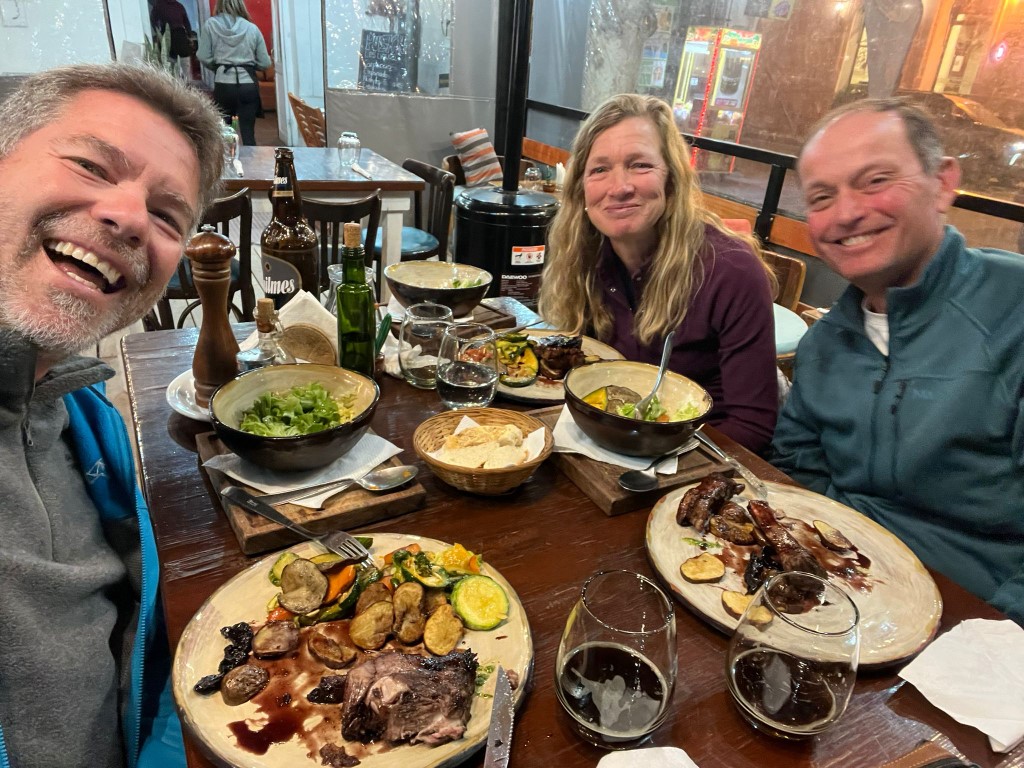
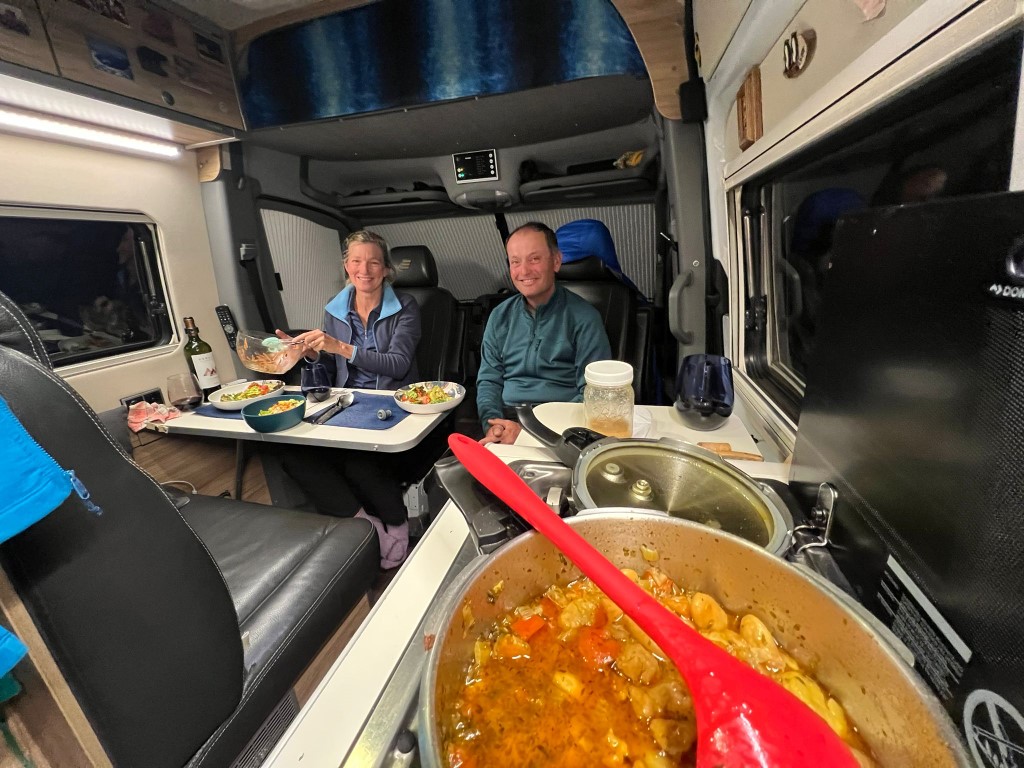
We’ve enjoyed patting all of the friendly animals we encounter, hiking through beautiful scenery- almost always by ourselves, visiting friendly towns, eating out experiencing the local cuisine, sharing meals together from our own kitchens, dreaming of finding better produce than we ever can get, driving to new places and having an open itinerary. I like this part of Argentina. Spring is in the air! Our plan is to explore the Salta region, then cross to Chile to the Atacama and then make a decision whether to head to Bolivia which is having fuel and economic issues right now or head in to Peru. Either way, we are looking forward to the journey.
